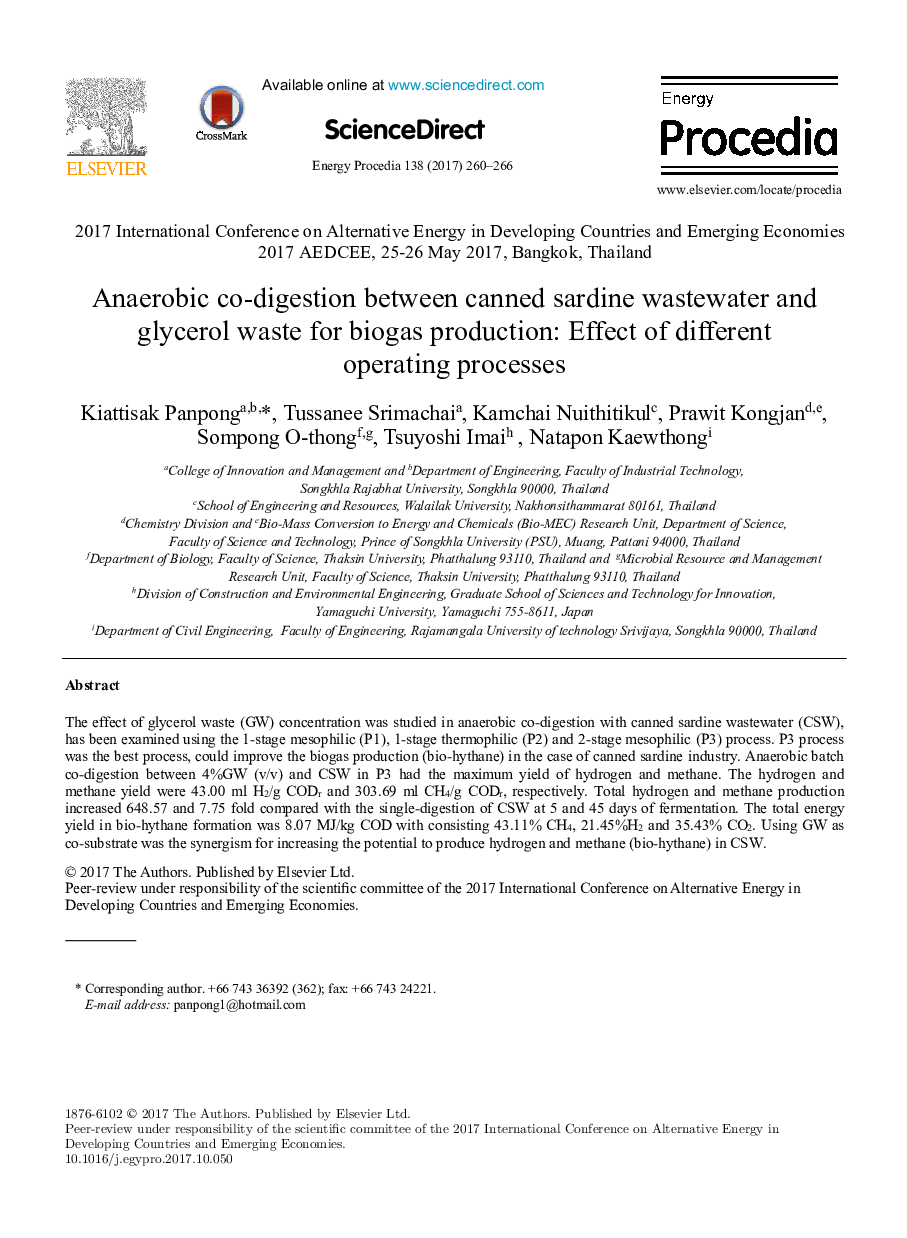| Article ID | Journal | Published Year | Pages | File Type |
|---|---|---|---|---|
| 7917774 | Energy Procedia | 2017 | 7 Pages |
Abstract
The effect of glycerol waste (GW) concentration was studied in anaerobic co-digestion with canned sardine wastewater (CSW), has been examined using the 1-stage mesophilic (P1), 1-stage thermophilic (P2) and 2-stage mesophilic (P3) process. P3 process was the best process, could improve the biogas production (bio-hythane) in the case of canned sardine industry. Anaerobic batch co-digestion between 4%GW (v/v) and CSW in P3 had the maximum yield of hydrogen and methane. The hydrogen and methane yield were 43.00 ml H2/g CODr and 303.69 ml CH4/g CODr, respectively. Total hydrogen and methane production increased 648.57 and 7.75 fold compared with the single-digestion of CSW at 5 and 45 days of fermentation. The total energy yield in bio-hythane formation was 8.07 MJ/kg COD with consisting 43.11% CH4, 21.45%H2 and 35.43% CO2. Using GW as co-substrate was the synergism for increasing the potential to produce hydrogen and methane (bio-hythane) in CSW.
Related Topics
Physical Sciences and Engineering
Energy
Energy (General)
Authors
Kiattisak Panpong, Tussanee Srimachai, Kamchai Nuithitikul, Prawit Kongjan, Sompong O-thong, Tsuyoshi Imai, Natapon Kaewthong,
